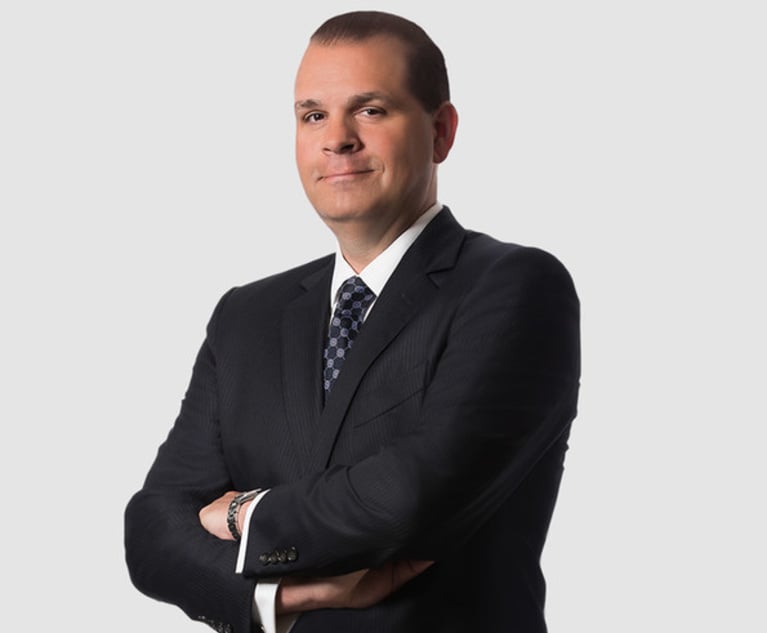What Leaders Can Do When Tensions Run High, Part II—Organizational Focus
The pandemic, global unrest, political extremism, the war for talent and more are placing a great burden on today's law firm leaders, leaving many feeling burnt out and underprepared.
September 22, 2022 at 12:53 PM
8 minute read
 Marcie Borgal Shunk, president and founder of the The Tilt Institute Inc. Courtesy photo
Marcie Borgal Shunk, president and founder of the The Tilt Institute Inc. Courtesy photo
Smart Strategy
Are you solving the right problems? This query is the title of a 2017 article (and subsequent book) by Thomas Weddell-Weddellsborg, and the consummate question when discussing virtually any persistent challenge. It also holds a profound lesson for law firms today. As detailed in the first article of this series, leaders are fast becoming overwhelmed with the weight and impact of over two years of imposed change. The pandemic, global unrest, political extremism, the war for talent and more are placing a great burden on today's law firm leaders, leaving many feeling burnt out and underprepared. Daily inquiries persist about how and whether to enforce return-to-office, what hybrid work model will best maintain culture, when and on what issues the firm should publicly take a stance, and more. These are not simple questions.
Nor are there simple answers. Yet an elevated level of awareness can help leaders initiate positive change. Part one of this series explored self-awareness (how leaders' understanding of their own strengths, perspectives and vulnerabilities empowers them to be more effective), and "other awareness," such as empathy. Situational awareness is the third frontier.
Cultivating Situational Awareness
On the surface, awareness of organizational problems seems straightforward. Low engagement, high stress, "quiet quitting," and low office attendance have visible manifestations. Those attune to their talent will see evidence of these in how people interact and engage with each other and their work (note: if billable hours are the only indicator being reviewed, these signals can and will be missed. Productivity does not always decline even while work quality slips or a departure is imminent). Many law firms are responding to these challenges—deploying vacation policies, wellness programs and social events. These solutions, however, rarely address the underlying issues or root causes. They are Band-Aids—good to ease the pain but ineffective at preventing further harm. Moreover, what is causing duress for one professional may vary considerably from what is sparking disengagement in another.
This content has been archived. It is available through our partners, LexisNexis® and Bloomberg Law.
To view this content, please continue to their sites.
Not a Lexis Subscriber?
Subscribe Now
Not a Bloomberg Law Subscriber?
Subscribe Now
NOT FOR REPRINT
© 2025 ALM Global, LLC, All Rights Reserved. Request academic re-use from www.copyright.com. All other uses, submit a request to [email protected]. For more information visit Asset & Logo Licensing.
You Might Like
View All
Smaller Firms in 'Growth Mode' as Competition, Rates Heat Up



AI and Social Media Fakes: Are You Protecting Your Brand?
Trending Stories
- 1Uber Files RICO Suit Against Plaintiff-Side Firms Alleging Fraudulent Injury Claims
- 2The Law Firm Disrupted: Scrutinizing the Elephant More Than the Mouse
- 3Inherent Diminished Value Damages Unavailable to 3rd-Party Claimants, Court Says
- 4Pa. Defense Firm Sued by Client Over Ex-Eagles Player's $43.5M Med Mal Win
- 5Losses Mount at Morris Manning, but Departing Ex-Chair Stays Bullish About His Old Firm's Future
Who Got The Work
J. Brugh Lower of Gibbons has entered an appearance for industrial equipment supplier Devco Corporation in a pending trademark infringement lawsuit. The suit, accusing the defendant of selling knock-off Graco products, was filed Dec. 18 in New Jersey District Court by Rivkin Radler on behalf of Graco Inc. and Graco Minnesota. The case, assigned to U.S. District Judge Zahid N. Quraishi, is 3:24-cv-11294, Graco Inc. et al v. Devco Corporation.
Who Got The Work
Rebecca Maller-Stein and Kent A. Yalowitz of Arnold & Porter Kaye Scholer have entered their appearances for Hanaco Venture Capital and its executives, Lior Prosor and David Frankel, in a pending securities lawsuit. The action, filed on Dec. 24 in New York Southern District Court by Zell, Aron & Co. on behalf of Goldeneye Advisors, accuses the defendants of negligently and fraudulently managing the plaintiff's $1 million investment. The case, assigned to U.S. District Judge Vernon S. Broderick, is 1:24-cv-09918, Goldeneye Advisors, LLC v. Hanaco Venture Capital, Ltd. et al.
Who Got The Work
Attorneys from A&O Shearman has stepped in as defense counsel for Toronto-Dominion Bank and other defendants in a pending securities class action. The suit, filed Dec. 11 in New York Southern District Court by Bleichmar Fonti & Auld, accuses the defendants of concealing the bank's 'pervasive' deficiencies in regards to its compliance with the Bank Secrecy Act and the quality of its anti-money laundering controls. The case, assigned to U.S. District Judge Arun Subramanian, is 1:24-cv-09445, Gonzalez v. The Toronto-Dominion Bank et al.
Who Got The Work
Crown Castle International, a Pennsylvania company providing shared communications infrastructure, has turned to Luke D. Wolf of Gordon Rees Scully Mansukhani to fend off a pending breach-of-contract lawsuit. The court action, filed Nov. 25 in Michigan Eastern District Court by Hooper Hathaway PC on behalf of The Town Residences LLC, accuses Crown Castle of failing to transfer approximately $30,000 in utility payments from T-Mobile in breach of a roof-top lease and assignment agreement. The case, assigned to U.S. District Judge Susan K. Declercq, is 2:24-cv-13131, The Town Residences LLC v. T-Mobile US, Inc. et al.
Who Got The Work
Wilfred P. Coronato and Daniel M. Schwartz of McCarter & English have stepped in as defense counsel to Electrolux Home Products Inc. in a pending product liability lawsuit. The court action, filed Nov. 26 in New York Eastern District Court by Poulos Lopiccolo PC and Nagel Rice LLP on behalf of David Stern, alleges that the defendant's refrigerators’ drawers and shelving repeatedly break and fall apart within months after purchase. The case, assigned to U.S. District Judge Joan M. Azrack, is 2:24-cv-08204, Stern v. Electrolux Home Products, Inc.
Featured Firms
Law Offices of Gary Martin Hays & Associates, P.C.
(470) 294-1674
Law Offices of Mark E. Salomone
(857) 444-6468
Smith & Hassler
(713) 739-1250





